Electrical engineering
- Electrical engineering is a field of engineering that generally deals with the study and application of electricity, electronics and electromagnetism. The field first became an identifiable occupation in the late nineteenth century after commercialization of the electric telegraph and electrical power supply. It now covers a range of subtopics including power, electronics, control systems, signal processing and telecommunications.Electrical engineering may include electronic engineering. Where a distinction is made, usually outside of the United States, electrical engineering is considered to deal with the problems associated with large-scale electrical systems such as power transmission and motor control, whereas electronic engineering deals with the study of small-scale electronic systems including computers and integrated circuits.Alternatively, electrical engineers are usually concerned with using electricity to transmit energy, while electronic engineers are concerned with using electricity to process information. More recently, the distinction has become blurred by the growth of power electronics.
Education
Electrical engineers typically possess an academic degree with a major in electrical engineering. The length of study for such a degree is usually four or five years and the completed degree may be designated as a Bachelor of Engineering, Bachelor of Science, Bachelor of Technology or Bachelor of Applied Science depending upon the university. The degree generally includes units covering physics, mathematics, computer science, project management and specific topics in electrical engineering. Initially such topics cover most, if not all, of the sub-disciplines of electrical engineering. Students then choose to specialize in one or more sub-disciplines towards the end of the degree.Some electrical engineers choose to pursue a postgraduate degree such as a Master of Engineering/Master of Science (M.Eng./M.Sc.), a Master of Engineering Management, a Doctor of Philosophy(Ph.D.) in Engineering, an Engineering Doctorate (Eng.D.), or an Engineer's degree. The Master and Engineer's degree may consist of either research, coursework or a mixture of the two. The Doctor of Philosophy and Engineering Doctorate degrees consist of a significant research component and are often viewed as the entry point to academia. In the United Kingdom and various other European countries, the Master of Engineering is often considered an undergraduate degree of slightly longer duration than the Bachelor of Engineering.Practicing engineers
In most countries, a Bachelor's degree in engineering represents the first step towards professional certification and the degree program itself is certified by a professional body. After completing a certified degree program the engineer must satisfy a range of requirements (including work experience requirements) before being certified. Once certified the engineer is designated the title ofProfessional Engineer (in the United States, Canada and South Africa ), Chartered Engineer (in India, Pakistan, the United Kingdom, Ireland and Zimbabwe), Chartered Professional Engineer (in Australia and New Zealand) or European Engineer (in much of the European Union).The advantages of certification vary depending upon location. For example, in the United States and Canada "only a licensed engineer may seal engineering work for public and private clients".This requirement is enforced by state and provincial legislation such as Quebec's Engineers Act In other countries, no such legislation exists. Practically all certifying bodies maintain a code of ethicsthat they expect all members to abide by or risk expulsion. In this way these organizations play an important role in maintaining ethical standards for the profession. Even in jurisdictions where certification has little or no legal bearing on work, engineers are subject to contract law. In cases where an engineer's work fails he or she may be subject to the tort of negligence and, in extreme cases, the charge of criminal negligence. An engineer's work must also comply with numerous other rules and regulations such as building codes and legislation pertaining to environmental law.Professional bodies of note for electrical engineers include the Institute of Electrical and Electronics Engineers (IEEE) and the Institution of Engineering and Technology (IET). The IEEE claims to produce 30% of the world's literature in electrical engineering, has over 360,000 members worldwide and holds over 3,000 conferences annually. The IET publishes 21 journals, has a worldwide membership of over 150,000, and claims to be the largest professional engineering society in Europe. Obsolescence of technical skills is a serious concern for electrical engineers. Membership and participation in technical societies, regular reviews of periodicals in the field and a habit of continued learning are therefore essential to maintaining proficiencySub-disciplines
Electrical engineering has many sub-disciplines, the most popular of which are listed below. Although there are electrical engineers who focus exclusively on one of these sub-disciplines, many deal with a combination of them. Sometimes certain fields, such as electronic engineering and computer engineering, are considered separate disciplines in their own right.
PowerPower engineering deals with the generation, transmission and distribution of electricity as well as the design of a range of related devices. These includetransformers, electric generators, electric motors, high voltage engineering and power electronics. In many regions of the world, governments maintain an electrical network called a power grid that connects a variety of generators together with users of their energy. Users purchase electrical energy from the grid, avoiding the costly exercise of having to generate their own. Power engineers may work on the design and maintenance of the power grid as well as the power systems that connect to it. Such systems are called on-grid power systems and may supply the grid with additional power, draw power from the grid or do both. Power engineers may also work on systems that do not connect to the grid, called off-grid power systems, which in some cases are preferable to on-grid systems. The future includes Satellite controlled power systems, with feedback in real time to prevent power surges and prevent blackouts.]Control
Control engineering focuses on the modeling of a diverse range of dynamic systems and the design of controllers that will cause these systems to behave in the desired manner. To implement such controllers electrical engineers may use electrical circuits, digital signal processors, microcontrollers and PLCs(Programmable Logic Controllers). Control engineering has a wide range of applications from the flight and propulsion systems of commercial airliners to the cruise control present in many modern automobiles. It also plays an important role in industrial automation.Control engineers often utilize feedback when designing control systems. For example, in an automobile with cruise control the vehicle's speed is continuously monitored and fed back to the system which adjusts the motor's power output accordingly. Where there is regular feedback, control theory can be used to determine how the system responds to such feedback.
ElectronicsElectronic engineering involves the design and testing of electronic circuits that use the properties of components such as resistors, capacitors, inductors,diodes and transistors to achieve a particular functionality. The tuned circuit, which allows the user of a radio to filter out all but a single station, is just one example of such a circuit. Another example (of a pneumatic signal conditioner) is shown in the adjacent photograph.Prior to the second world war, the subject was commonly known as radio engineering and basically was restricted to aspects of communications and radar,commercial radio and early television. Later, in post war years, as consumer devices began to be developed, the field grew to include modern television, audio systems, computers and microprocessors. In the mid-to-late 1950s, the term radio engineering gradually gave way to the name electronic engineering.Before the invention of the integrated circuit in 1959, electronic circuits were constructed from discrete components that could be manipulated by humans. These discrete circuits consumed much space and power and were limited in speed, although they are still common in some applications. By contrast,integrated circuits packed a large number—often millions—of tiny electrical components, mainly transistors, into a small chip around the size of a coin. This allowed for the powerful computers and other electronic devices we see today.Microelectronics
Microelectronics engineering deals with the design and microfabrication of very small electronic circuit components for use in an integrated circuit or sometimes for use on their own as a general electronic component. The most common microelectronic components are semiconductor transistors, although all main electronic components (resistors, capacitors, inductors) can be created at a microscopic level. Nanoelectronics is the further scaling of devices down to nanometer levels.Microelectronic components are created by chemically fabricating wafers of semiconductors such as silicon (at higher frequencies, compound semiconductors like gallium arsenide and indium phosphide) to obtain the desired transport of electronic charge and control of current. The field of microelectronics involves a significant amount of chemistry and material science and requires the electronic engineer working in the field to have a very good working knowledge of the effects of quantum mechanics.
Signal processingSignal processing deals with the analysis and manipulation of signals. Signals can be either analog, in which case the signal varies continuously according to the information, or digital, in which case the signal varies according to a series of discrete values representing the information. For analog signals, signal processing may involve the amplification and filtering of audio signals for audio equipment or the modulation and demodulation of signals fortelecommunications. For digital signals, signal processing may involve the compression, error detection and error correction of digitally sampled signals.Signal Processing is a very mathematically oriented and intensive area forming the core of digital signal processing and it is rapidly expanding with new applications in every field of electrical engineering such as communications, control, radar, TV/Audio/Video engineering, power electronics and bio-medical engineering as many already existing analog systems are replaced with their digital counterparts.Although in the classical era, analog signal processing only provided a mathematical description of a system to be designed, which is actually implemented by the analog hardware engineers, Digital Signal Processing both provides a mathematical description of the systems to be designed and also actually implements them (either by software programming or by hardware embedding) without much dependency on hardware issues, which exponentiates the importance and success of DSP engineering.The deep and strong relations between signals and the information they carry makes signal processing equivalent of information processing. Which is the reason why the field finds so many diversified applications. DSP processor ICs are found in every type of modern electronic systems and products including, SDTV | HDTV sets, radios and mobile communication devices, Hi-Fi audio equipments,Dolby noise reduction algorithms, GSM mobile phones, mp3 multimedia players, camcorders and digital cameras, automobile control systems, noise cancelling headphones, digital spectrum analyzers, intelligent missile guidance, radar, GPS based cruise control systems and all kinds of image processing, video processing, audio processing and speech processing systems.
TelecommunicationsTelecommunications engineering focuses on the transmission of information across a channel such as a coax cable, optical fiber or free space. Transmissions across free space require information to be encoded in a carrier wave in order to shift the information to a carrier frequency suitable for transmission, this is known as modulation. Popular analog modulation techniques include amplitude modulation and frequency modulation. The choice of modulation affects the cost and performance of a system and these two factors must be balanced carefully by the engineer.Once the transmission characteristics of a system are determined, telecommunication engineers design the transmitters and receivers needed for such systems. These two are sometimes combined to form a two-way communication device known as a transceiver. A key consideration in the design of transmitters is their power consumption as this is closely related to their signal strength. If the signal strength of a transmitter is insufficient the signal's information will be corrupted by noise.
InstrumentationInstrumentation engineering deals with the design of devices to measure physical quantities such as pressure, flow and temperature. The design of such instrumentation requires a good understanding of physics that often extends beyond electromagnetic theory. For example, flight instruments measure variables such as wind speed and altitude to enable pilots the control of aircraft analytically. Similarly, thermocouples use the Peltier-Seebeck effect to measure the temperature difference between two points.Often instrumentation is not used by itself, but instead as the sensors of larger electrical systems. For example, a thermocouple might be used to help ensure a furnace's temperature remains constant. For this reason, instrumentation engineering is often viewed as the counterpart of control engineering.
ComputersComputer engineering deals with the design of computers and computer systems. This may involve the design of new hardware, the design of PDAs andsupercomputers or the use of computers to control an industrial plant. Computer engineers may also work on a system's software. However, the design of complex software systems is often the domain of software engineering, which is usually considered a separate discipline. Desktop computers represent a tiny fraction of the devices a computer engineer might work on, as computer-like architectures are now found in a range of devices including video game consolesand DVD players.
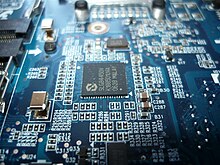







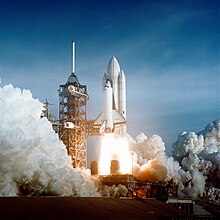
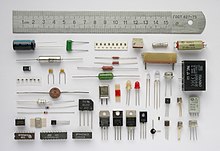
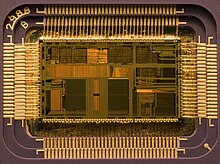
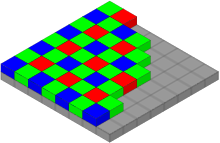
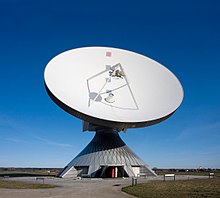
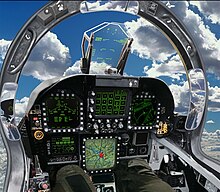
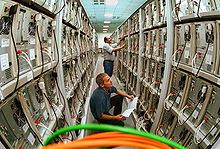







0 comments:
Post a Comment